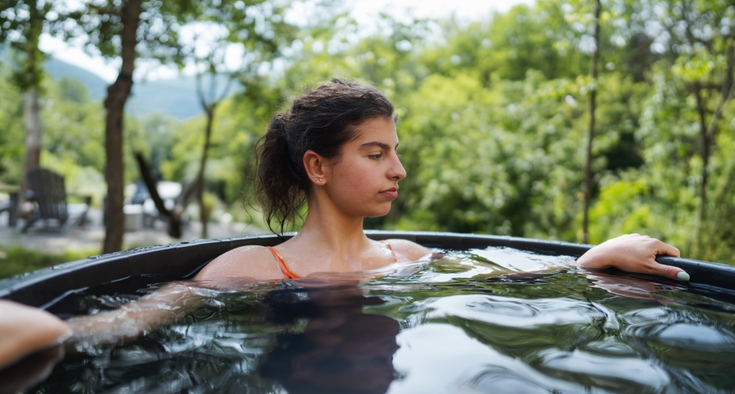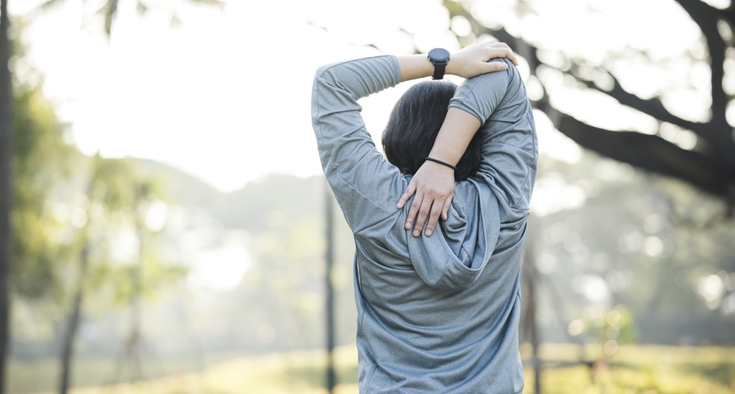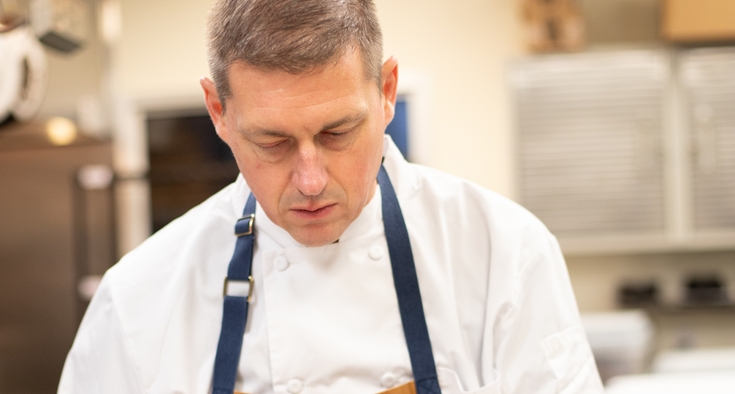You see heat and cold therapies all over social media these days. Influencers lounge in their barrel saunas or prep their tubs of ice in their backyards. Gyms advertise fancy cold plunge pools and sauna rooms. Celebrities share their cold-plunge regimens.
Yes, heat and cold therapies are having a moment. They are fairly easy to access, and they’re a simpler approach to muscle recovery and orthopedic pain management than something like medical injections.

Dr. Marc Haro, orthopedic surgeon with Sports Medicine Specialists of Charleston - Mount Pleasant, routinely used heat and cold therapies with athletes during his athletic-trainer days 30 years ago. He continues to use cold therapy with orthopedic patients who have complex knee and shoulder issues, specifically after injuries and during recovery from surgery. Haro talks through key things to know.
Move more freely and comfortably.
Cold therapy reduces inflammation.
When you apply cold therapy to an area of the body, it constricts the blood vessels to decrease blood flow and limit swelling. As you warm back up, blood vessels widen and bring increased blood supply, oxygen and nutrients back to that area. As a result, you can reduce muscle soreness and recover faster.
Heat therapy reduces tension.
When you apply heat therapy to an area of the body, it widens the blood vessels to improve circulation and bring oxygen and nutrients to that area. This can loosen up tight muscles and reduce stiffness.
Heat and cold therapies aren’t all about saunas and cold plunges.
Heat and cold therapies can be administered in a variety of ways. A heating pad, warm bath or microwaveable gel pack can support heat therapy. Cold therapy can be supported by an ice pack, freezable gel pack or a cold-water compression therapy sleeve circulating ice water or refrigerant.
Cold therapy tends to be the best choice after an injury or surgery.
There’s better evidence for using cold therapy immediately after a sudden, traumatic injury, like an ACL tear, and also immediately after surgery. The quicker you start this, the more you can decrease inflammation and stop body tissue from dying. So, there’s both a recovery and a protective aspect to cold therapy.Once the body is no longer inflamed, choosing heat therapy or cold therapy (or both) is all about personal preference.
Best doctors. Amazing nurses. Remarkable care.
After that inflammatory phase, you can probably go either way with choosing cold therapy or heat therapy. There’s evidence for both, or a combination. Some athletes like heat therapy prior to workouts because it can relax the muscles and relieve stiffness during the warmup period. Some athletes like cold therapy for muscle recovery after sporting activities or a hard workout.
Cold plunging is all the rage right now. But a variety of cold therapy methods provide similar benefits.
Cold plunges are difficult for a lot of people to tolerate, although that kind of immersion might be better at surrounding the muscle tissues and offering some compression with the water pressure. But any form of cold therapy, as long as it is used appropriately, is likely beneficial.
Creams for minor aches and pain that make the skin feel cool then warm don’t necessarily offer the same benefits as these other forms of cold and heat therapies.
Those products function as more of a skin irritant. They irritate your nerve endings and make your body think it’s cold or hot, but they don’t provide all of the same benefits.
If you want to try a combination of heat and cold therapies, consider the order of applications.
Hypothetically, cold followed by heat may be more beneficial.
The cold constriction, or narrowing of blood vessels, gets the blood flowing to the central core of the body, and then the warm dilation, or widening of blood vessels, afterward gets the blood flowing back to all parts of the body. People seem to like it in that order.
Some people experience clarity of mind as a result of heat and cold therapies.
It’s very individualized. For some, the only clarity they have is: “How quickly can I get out of this cold plunge or sauna?” But if it’s something you find relaxing and mentally beneficial and clarifying in addition to the other physical effects, you just get an added benefit.
People with certain health conditions should use caution with heat and cold therapies.
With certain health conditions, it’s worth talking to your doctor first before you try these therapies. For example, Raynaud's phenomenon, which decreases blood flow to the extremities like the fingers and toes, can be triggered by exposure to the cold, which could be painful.
People with open sores or active skin infections should stay out of cold plunges and hot tubs because they can be exposed to bacteria. Lastly, heat therapy via saunas and hot tubs could be problematic for people with cardiac issues that aren’t well-controlled because it causes increased heart rate.
Not comfortable with heat and cold therapies? There are alternative approaches to aiding muscle recovery and reducing tension.
For muscle relaxation and recovery, soft tissue massage is an option that can help increase blood flow. For swelling from an injury, which can greatly benefit from ice, you can use compression and elevation.
For example, if you have a swollen ankle, you can wrap it with an elastic bandage to compress it and reduce swelling, then prop it up on a pillow to elevate it and help increase circulation.













